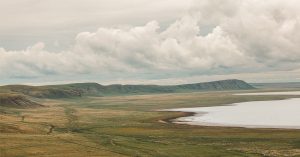
By Marjory Harper
In February 1983, just as I was finishing my PhD, I gave my first conference paper in the slightly intimidating surroundings of Marischal College at the University of Aberdeen. The event, organised jointly by two university departments and the Scottish Local History Conference, turned the spotlight on the history and culture of the north-east of Scotland, and the subject of my paper – emigration from Aberdeenshire and Banffshire – recycled some of the themes from my doctoral studies.
A year or so later, a revised version of that conference paper appeared in volume 6 of Northern Scotland. It was my first publication. More than three decades ago, I had no inkling either of the career in academia that lay ahead, or that I would have the privilege of co-editing for four years the new series of Northern Scotland after it was reincarnated in 2010.
In recent years, Scottish emigration and diaspora have been explored by an ever-growing army of scholars worldwide, who have deployed a range of lenses to evaluate the causes, manifestations and consequences of overseas settlement and sojourning. In the mid-1980s, however, the subject was in its infancy. The trail had been blazed in 1966 with the publication of Gordon Donaldson’s book, The Scots Overseas, but there was then something of a lull until Jim Hunter and Eric Richards began to scrutinise emigration from a Highland perspective in the 1970s and early 1980s.
My own interest in interpreting emigration through a north-eastern lens was due emphatically to the encouragement of the late Donald Withrington, an inspirational teacher and mentor who fired my enthusiasm as an undergraduate and subsequently supervised my PhD. In practical terms, I decided to focus on Aberdeenshire and the surrounding counties partly because of the depth and breadth of sources in Aberdeen University Library’s Special Collections, especially the full run of the Aberdeen Journal from December 1747. The article in Northern Scotland, which drew heavily on the local press, aimed to offer a different narrative of emigration from that which was dominant in 1984. Specifically, it aimed to provide a counterbalance to the Highland narrative of famine, destitution and expulsion by turning the spotlight on a neglected corner of Scotland where decisions to emigrate were, for many, a quest for adventure rather than a flight from poverty.
Since the mid-1980s, many more threads have been added to the tapestry of publications about Scottish emigration, which has been studied from the perspective of both donor and host countries, regions and communities. Some accounts have been sweeping chronological, thematic or statistical overviews; others have woven stories of particular localities or families; and in recent years the focus has shifted to include the significance of return migration and oral testimony.
I remain indebted to Donald Withrington for encouraging me to publish my early findings in Northern Scotland, and for setting my feet on a trail which I am still following with enthusiasm. New research vistas continue to open up, and all along the trail I am frequently heartened by encounters with like-minded colleagues, as well as supportive emigrants, many of whom have become friends.
Marjory Harper is Professor of History at the University of Aberdeen and Visiting Professor at the Centre for History, University of the Highlands and Islands. She has written extensively about Scottish (and British) emigration and diaspora in the nineteenth and twentieth centuries.
Read the full article: Emigration from north east Scotland in the nineteenth century





